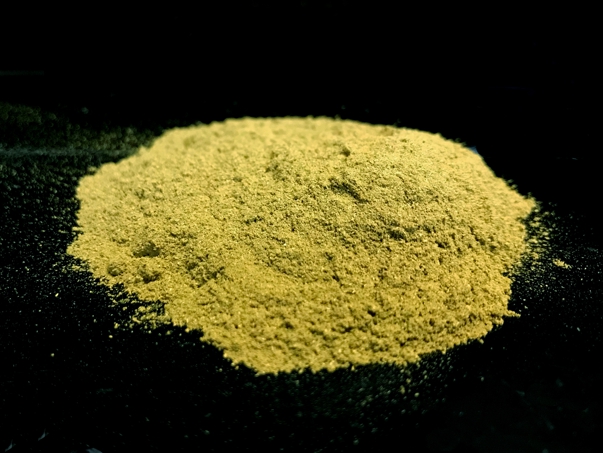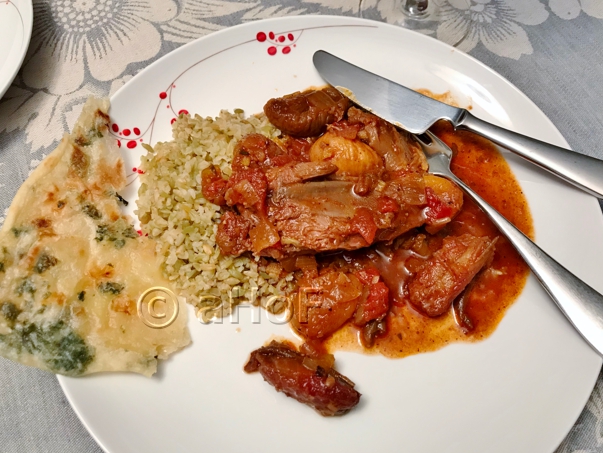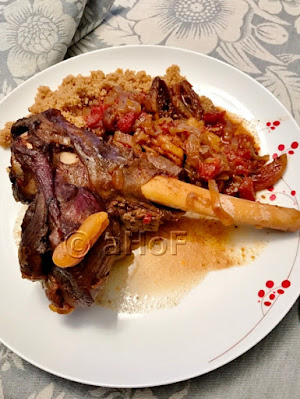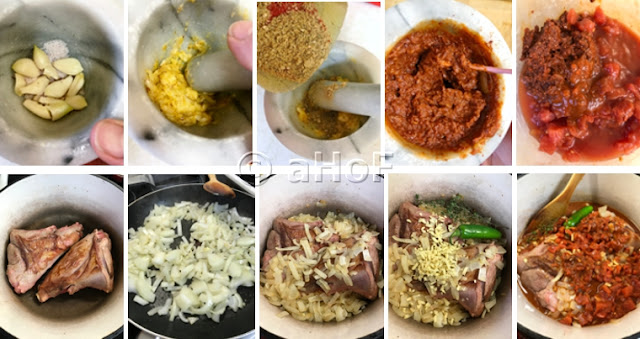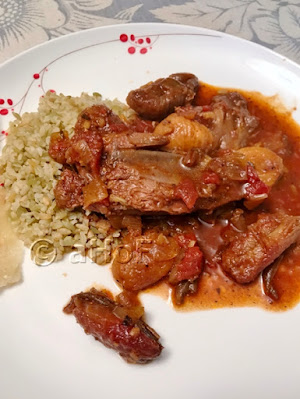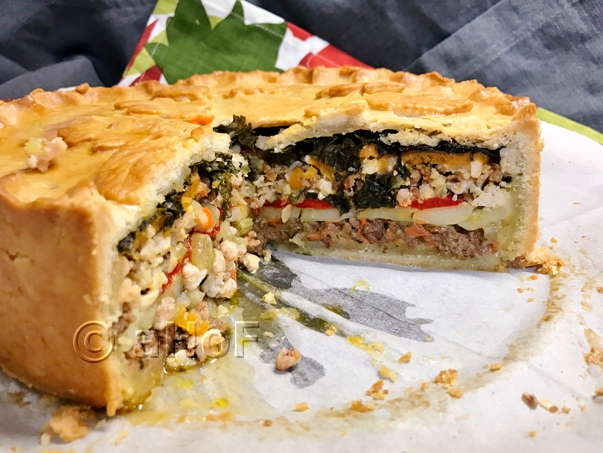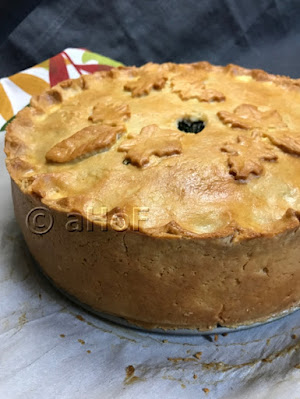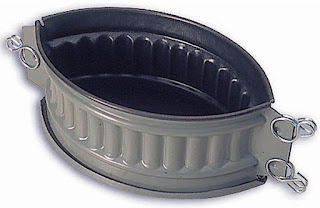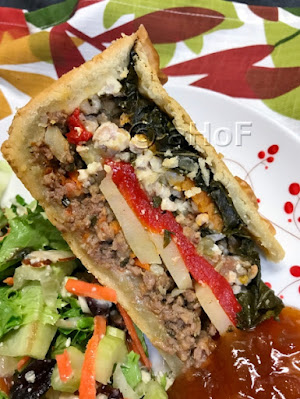I have always liked beans. I grew up on pork & beans of course, and my parents often made Bean Soup using a leftover ham bone and white beans. But it wasn't until I got married and went to live in Guatemala that I encountered Black Beans for the first time. That first time, when I saw them on the table I had absolutely no idea what they were. This was mainly because they were served pureed. There was no form to identify it as beans. When I tasted them, I loved them, though they tasted like no beans I had ever tried before. Pork & Beans are very sweet. Mom & Dad's Bean Soup was savory, but tasted of ham and other vegetables. These black beans had no sweetness, no ham flavor.
As I lived in Guatemala for 12 years, I learned so much about Guatemalan foods, and enjoyed most everything. I embraced learning to cook everything I could. I jumped in with both feet and kept myself firmly entrenched there and to this day, I keep going back to some of these favorite foods. Beans have stayed at the top of the list, mainly as they are easy to find now. Cooking them and preparing them might take a while, but then I have beans made and ready to reheat for a few days. If you leave them "parados," or whole, they really don't take much preparation. To strain them or puree them, they are called "colados" and all you need is a blender, or at very least a food mill. And best of all, my current husband has also come to like them, most particularly if they are made "volteados."
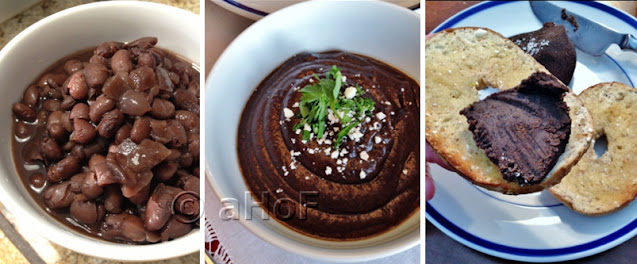 |
| Parados or Cooked - Colados or Strained - Volteados or Turned |
"Volteados," you ask?
Okay, so there are three main ways you might find black beans in Guatemala:- Parados, or cooked and left whole
- Colados, or pureed or strained
- Volteados, literally translated as "turned over," or "flipped"
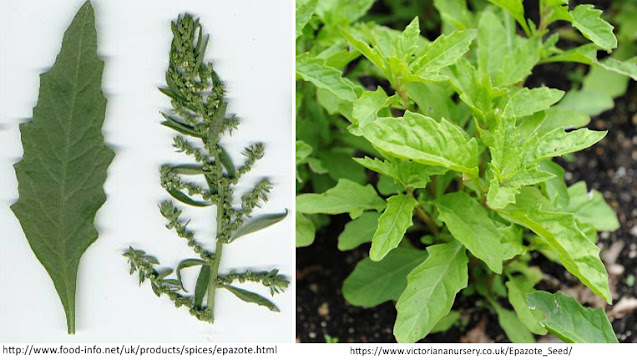 |
| Epazote herb |
Once my beans are cooked through, I saute onion and garlic in olive oil in a large skillet until deep golden and caramelized. I add these to the beans, along with salt, and that is all it takes, if you are eating them whole. If there is too much liquid in the pot, I cook some of the liquid out, slowly, but other than that, the beans are done.
If I prefer to make them pureed, or colados (literally, "strained" as they used a food mill for this task, when I lived in Guatemala), I then put them into the blender and puree them smooth and there you have them. And only then can they be made properly into "Volteados."
The whole process is one of evaporation. If there is a lot of liquid with the beans when they are pureed, then it will take a lot longer to make Volteados. If you plan to make Volteados, it is best to allow the whole beans to cook down and evaporate some of their liquid. The reasoning is simple: while they are whole, the liquid can boil down without much hands-on attention. Once they are pureed, they will need to be stirred vigorously for the full time it takes to evaporate out the liquid. If you stop stirring, you run the risk of burning the beans, and all it takes is one bit of inattention to turn a heavenly dish into an inedible dish.
To start the process, add oil (I use olive oil) to a large, heated skillet, preferably nonstick, over medium heat. Then:
Possibly, these are such a hit because they are further cooked down, evaporating liquids from them until the whole batch comes together into one, semi-solid, mass. It may not look very appealing at first glance, I understand. But once all the excess moisture is cooked out, the flavors are really concentrated, and they are just this side of heaven, in flavor.
Black Beans
Basic Recipe
Makes a large pot of beans
1 pound black turtle beans
Epazote herb, fresh or dried, optional
1 tablespoon cooking oil or olive oil
1 medium onion, chopped
2 - 4 cloves garlic, minced
2 to 3 teaspoons salt
Sort through the dry beans, preferably the night before, removing any debris or stones. Wash them well, then place in a bowl and cover with water by about 3 inches. Let set overnight.
In the morning, drain the beans and place them into a large, heavy duty pot with tight-fitting lid. Cover with clean water by about 2 - 3 inches and set to boil. If you have access to epazote herb, place one or two sprigs in with the beans to cook. If you have only dried epazote herb, use about 1 to 2 teaspoons, or more, to taste. Bring to a boil, reduce to a simmer, cover with lid. Cook the beans for about 2 hours, or until they are very tender and beginning to fall apart.
Separately, heat a large skillet and add in the oil. Sauté the onion and garlic slowly, stirring often, until deep golden brown. Pour this into the pot with the cooked beans and the salt, as desired. Stir well, then cook for about 10 minutes to meld flavors. Serve them whole or use one of the methods above to puree or make volteados.
My passion is teaching people how to create a harmony of flavors with their cooking, and passing along my love and joy of food, both simple or exotic, plain or fancy. I continue my journey in ethnic and domestic cuisines, continuing my journey to explore diverse culinary experiences and hopefully to start you on a journey of your own. Join me also at A Harmony of Flavors on Facebook, and Pinterest.
If I prefer to make them pureed, or colados (literally, "strained" as they used a food mill for this task, when I lived in Guatemala), I then put them into the blender and puree them smooth and there you have them. And only then can they be made properly into "Volteados."
How to make Frijoles Volteados
Once you have pureed your cooked, flavored beans, you can begin making them into Volteados. In the photo below, I took photos at 5-minute intervals. This is accurate only if your beans are not too runny (it will take a while longer to evaporate too much liquid), or your heat too low during the process (in which case it will take a while longer to stir them until they are dry enough to "flip," or roll around in the skillet).The whole process is one of evaporation. If there is a lot of liquid with the beans when they are pureed, then it will take a lot longer to make Volteados. If you plan to make Volteados, it is best to allow the whole beans to cook down and evaporate some of their liquid. The reasoning is simple: while they are whole, the liquid can boil down without much hands-on attention. Once they are pureed, they will need to be stirred vigorously for the full time it takes to evaporate out the liquid. If you stop stirring, you run the risk of burning the beans, and all it takes is one bit of inattention to turn a heavenly dish into an inedible dish.
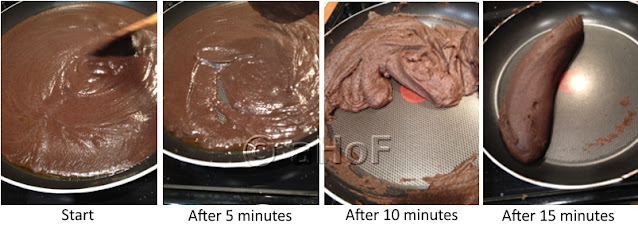 |
| Making Frijoles Volteados |
- Pour in the pureed beans.
- Stir constantly with a wooden spoon or spatula.
- Lower heat slightly if needed; the beans will boil and splatter, and they are HOT. Like molten lava hot!
- Continue stirring. After a few minutes, you should be able to see the pan, when scraping through the beans with the wooden spoon, as in photo 2 above.
- In another few minutes, the beans will have gotten very noticeably thicker and start to clean the skillet in spots, as in photo 3 in the sequence.
- Once the beans come together in a whole mass, as in photo 4 of the sequence, begin to tilt the pan one way and then the other, forming them into a smooth, somewhat crescent-like shape.
- Turn out onto a platter to serve, hot or warm.
Possibly, these are such a hit because they are further cooked down, evaporating liquids from them until the whole batch comes together into one, semi-solid, mass. It may not look very appealing at first glance, I understand. But once all the excess moisture is cooked out, the flavors are really concentrated, and they are just this side of heaven, in flavor.
Black Beans

Black Beans

Basic Recipe
Makes a large pot of beans
1 pound black turtle beans
Epazote herb, fresh or dried, optional
1 tablespoon cooking oil or olive oil
1 medium onion, chopped
2 - 4 cloves garlic, minced
2 to 3 teaspoons salt
Sort through the dry beans, preferably the night before, removing any debris or stones. Wash them well, then place in a bowl and cover with water by about 3 inches. Let set overnight.
In the morning, drain the beans and place them into a large, heavy duty pot with tight-fitting lid. Cover with clean water by about 2 - 3 inches and set to boil. If you have access to epazote herb, place one or two sprigs in with the beans to cook. If you have only dried epazote herb, use about 1 to 2 teaspoons, or more, to taste. Bring to a boil, reduce to a simmer, cover with lid. Cook the beans for about 2 hours, or until they are very tender and beginning to fall apart.
Separately, heat a large skillet and add in the oil. Sauté the onion and garlic slowly, stirring often, until deep golden brown. Pour this into the pot with the cooked beans and the salt, as desired. Stir well, then cook for about 10 minutes to meld flavors. Serve them whole or use one of the methods above to puree or make volteados.
My passion is teaching people how to create a harmony of flavors with their cooking, and passing along my love and joy of food, both simple or exotic, plain or fancy. I continue my journey in ethnic and domestic cuisines, continuing my journey to explore diverse culinary experiences and hopefully to start you on a journey of your own. Join me also at A Harmony of Flavors on Facebook, and Pinterest.


